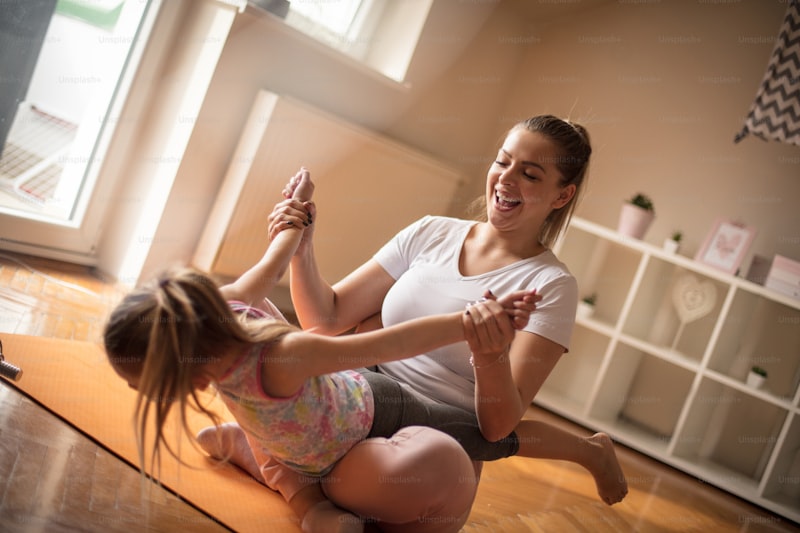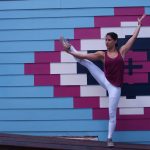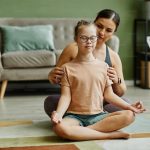A few weeks back I began this column about how yoga can create magic for children. In this installation, we’ll take a look at how to connect with little yogis from three and seven, and how to hold their attention throughout a yoga class.
When it comes to yoga, the key to engaging younger participants is fun, imagination and creativity… and a willingness to play. There is the ever-essential element of magic of course, but that comes later.
A Sense Of Discovery
Between the ages of three and seven you are discovering yourself and the world in which you live. Emotionally, mentally and physically you are experimenting, pushing the boundaries of what you are, who you’ll become and what you’re capable of. You are broadening your experiences and learning from them by using both mind and body.
Yoga has the power to harness this sense of exploration and discovery, especially when employing an imaginative narrative or rather a sense of play. My aim is to motivate younger class members to move, stretch and fill the space in a way that supports their increasing independence as well as their unique development. My challenge however, is to keep these little people engaged and wanting to be in the space with each other and me.
So how does one maintain the attention of a class full of three to seven year olds? Simple: take advantage of their limitless imaginations!
From 3 To 5: Building A Story
An essential point to remember is to engage with younger children according to their age group. Let’s first look at the younger kids between three and five years. The trick here is to…
Keep Class Vibrant and Visual
Younger children react well to visual stimulus such as yoga cards, puppets and animal toys that the children can pick one at a time from a Magic Box. When they have randomly picked an animal we practice the pose all together in order to get their minds leaping from one story to the next. We traverse continents via the wild animals through imitation of movement and make sound effects to bring the pose and story to life.
Demonstrate and Repeat
I find repetition is the key to learning at this age. They also learn by doing, rather than complicated instruction. Keep it simple! At the end of class you can review by asking, “what animals did we meet in our story today?” As they call out we repeat each animal in turn once again.
Quiet Time and Relaxation
You would think that lying still is a challenge for this age group, but my mini yogis are quick to tell me that relaxation is their favourite element of any yoga class! I use the ‘Ladybird Relaxation’ which uses guided imagery (and the aid of a ladybird prop) to imitate a ladybird resting on their shoulder that guides them into relaxation to calm their minds and still their bodies.
Ages 5 to 7: Let’s Play A Game!
Now let’s look at five to seven age group, the focus here is to keep class…
Fun and Fast
This age group have an infinite amount of energy! I make the class as active as possible through the use of games — lots of yoga games. ‘Sneaky Trees’ is always a favourite where I use a Tree Pose (Vrksāsana) to help improve balance and co-ordination while incorporating fun at the same time.
Structure and Variety
I find this age group can get easily distracted. Attention span and concentration are the most challenging aspects. The best classes have enough of a variety to hold their focus, keeping their minds interested between games and fun, as well as engaging in quiet time and relaxation.
Self-Awareness and Focus
Yoga teaches children many valuable tools. I believe self awareness and focus are two essentials at this age. When children can learn to relax through the use of yoga, they are better equipped to handle stress and pressure that are so common place today. Yoga provides a space to allow children to develop their self awareness and focus that will only benefit them as they get older.
Spirit of Yoga
Throughout it all my mini-yoga members unwittingly connect their creative minds with their flexible bodies which in turn (and here comes the real magic) reinforces their individual spirits.
When the mind and body are working together in such a creative and dynamic way, using movement and intelligence to unlock and invent, the inevitable outcome is one of self-discovery; a self-discovery that boosts confidence and builds an inner and outer strength.
In other words my younger participants are gaining a new kind of self-expression and the gift of greater self-esteem, effortlessly. This is yoga, or rather the ‘magic’ of yoga, and to me, there is no better recipe for inquiring minds and growing bodies.
Do you agree?












